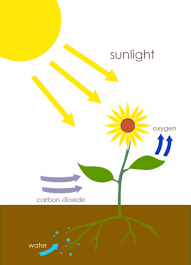What is photosynthesis?« Back to Questions List
|
Photosynthesis is an important chemical processes responsible for the existence of the plant kingdom. Learning about photosynthesis you may understand how important sunlight and water to plants are.
Leaves are known to be the food factories of the plants. The leaves make food for the plants by using carbon dioxide and water. Water is taken from the soil via the roots of the plant and carbon dioxide via the tiny pores in the leaves called stomata. The word ‘Photo’ means light. Sunlight is very much essential for putting these raw materials together to make food. Apart from sunlight, water and carbon dioxide, there is one other important substance called chlorophyll. Chlorophyll is the green pigment present in the leaves. It acts as catalyst to carry on chemical reactions.
Plants make simple sugar by photosynthesis. It all happens in a fraction of a second. Water gets split into hydrogen and oxygen. The hydrogen is combined chemically with carbon dioxide to produce simple sugar. This dissolves easily in water and hence is transported to all parts of the plant. Oxygen is given off as a by-product. Thus, plants take in CO2 and gives out oxygen during photosynthesis reaction. Photosynthesis is not actually possible without chlorophyll. When the leaves are not green, it may contain no chlorophyll or ample amounts masked by other color pigments. Anything green indicates chlorophyll and presence of chlorophyll in seedlings, green twigs, leaf stalks, green stems etc indicates photosynthesis can occur in these parts too. Carbon dioxide and oxygen move in and out of the leaves through stomata. Normally they are on the underside of the leaves while few species like water lilies etc also have them on the upper surface. What are the features of sodium?What is VX nerve agent? |

